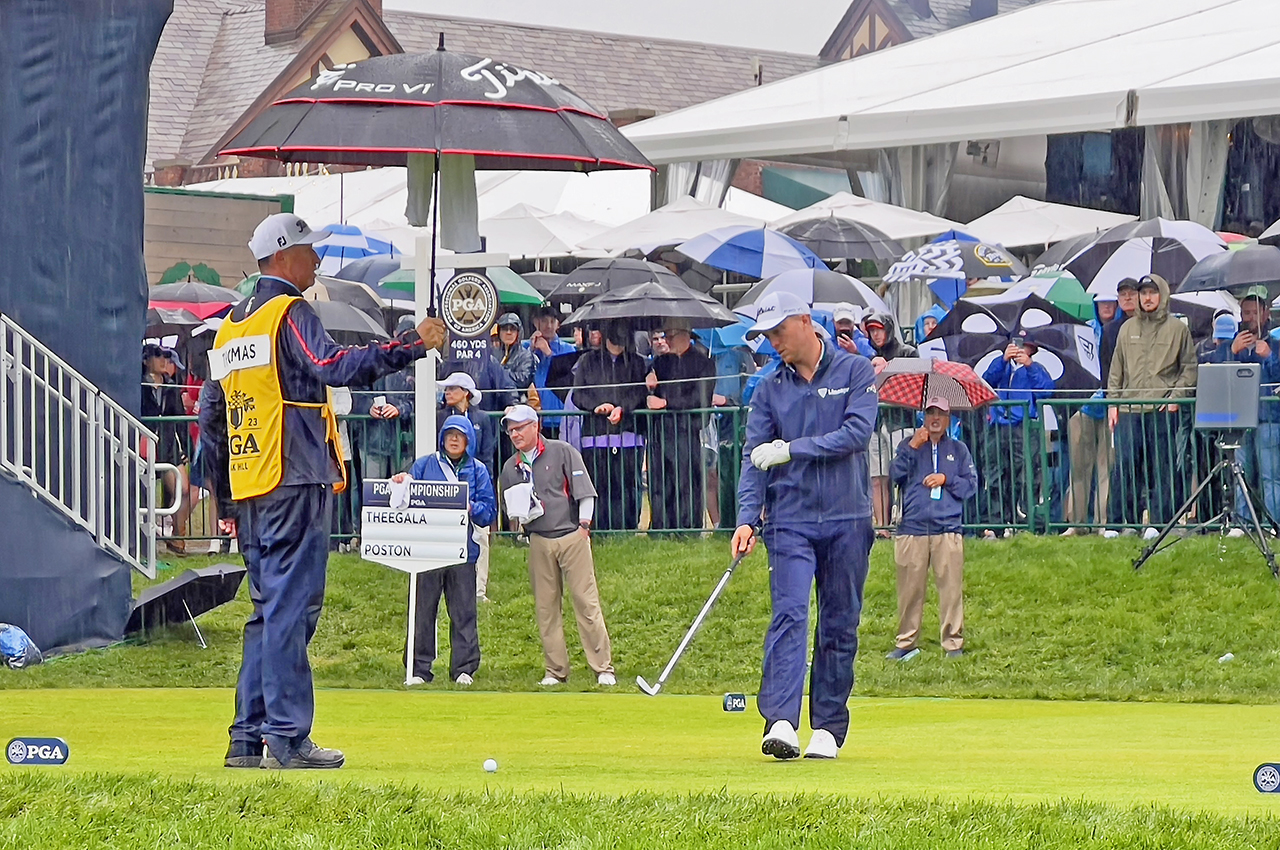ROCHESTER, N.Y. — With rain soaking Oak Hill Country Club on Saturday, the 2023 PGA Championship is testing every player’s ability to hit shots in soggy conditions while trying to stay dry.
But as the golfers prepare to hit their tee shots, you may notice that caddies hold an umbrella over the ball instead of their player. There’s a good reason for that.
Modern rain suits do an excellent job of keeping players dry, and unlike the foul-weather gear from 20 or 30 years ago, today’s jackets and pants are breathable, so golfers don’t feel clammy. Rain gloves actually get tackier as they get wetter, and waterproof footwear does an amazing job of keeping golfers’ feet dry. So golfers can stay fairly dry even in heavy downpours.
Golf balls, on the other hand, can behave very differently when they are covered in rain.
The grooves of an iron can not dig into or grab the cover of a wet ball as easily as they can a dry ball. As a result, instead of compressing against the face at the moment of impact, wet golf balls tend to slide up the hitting surface, which produces a shot that flies higher and with less spin.

Carl Smith, Sahith Theegala’s caddy, keeps his ball dry on the first tee Saturday at the 2023 PGA Championship. (David Dusek/Golfweek)
The same thing happens, to a slightly lesser degree, when players hit a wet ball with a driver, even though drivers don’t have grooves. The wet ball skims up the face and comes off with less spin, making its flight less controllable.
So on tee shots and putts, when a player has a chance to pick up his ball and place it either on a tee or the green, caddies focus on keeping it dry.
You will also notice that many players reach for a towel (which is often hanging in the spokes of their umbrella) and dry the face of the club they are about to use. Again, it’s to help create the driest contact possible.

Golf balls that are wet are harder to spin and control. (David Dusek/Golfweek)
On shots played from the fairway or around the green, there is no point in holding an umbrella over the ball because it is already wet. To reduce the effects of water getting between the ball and the edges of the grooves, many manufacturers design the grooves of wedges to be wider and deeper than the grooves found in irons, creating a channel-like effect that helps to enhance spin. Some companies also have microgrooves and surface-roughening treatments on their wedges to improve performance in wet conditions, but the main grooves are doing most of the work when it rains.
If players are able to hit pitch shots and chip shots with good spin, there is no guarantee that the ball will stop the way it typically would on a dry green. Low, spinning shots often hydroplane and slide on wet grass, reducing the effects of spin, while high-spinning shots that come down more vertically often peal back on rain-softened greens.
On rainy days, gauging exactly how the ball will react coming off the face and how it will behave on it hits the green is a skill that is as valuable as green reading.

